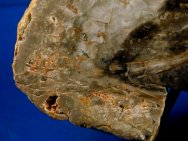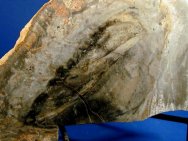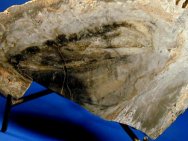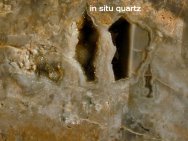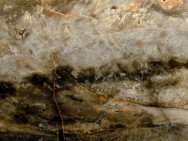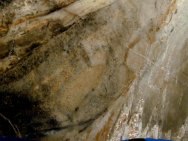| 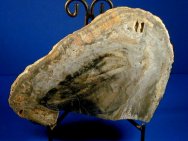 Benthic
microbial-produced reef structures from the Cambrian and Ordovician
often take the form known as thrombolites that are recognized
by clotted texture as opposed to thin or thick laminae of classic
stromatolites. Generally speaking, stromatolite systematics in
the literature is plagued by grossly inconsistent ontology's and
terminologies, and presents very recondite. Some authors attribute
the of thrombolites to carbonate precipitation induced by bacteria
under low sedimentation rate and low water energy when a Paleozoic
reef came under ecological stress; their formation, however, is
very complex conjecture that is not well understood. Sometimes
called a cryptalgal clot, where clot refers to a macro-structural
column; the key distinction is the stromatolite lacks distinct
lamination. Benthic
microbial-produced reef structures from the Cambrian and Ordovician
often take the form known as thrombolites that are recognized
by clotted texture as opposed to thin or thick laminae of classic
stromatolites. Generally speaking, stromatolite systematics in
the literature is plagued by grossly inconsistent ontology's and
terminologies, and presents very recondite. Some authors attribute
the of thrombolites to carbonate precipitation induced by bacteria
under low sedimentation rate and low water energy when a Paleozoic
reef came under ecological stress; their formation, however, is
very complex conjecture that is not well understood. Sometimes
called a cryptalgal clot, where clot refers to a macro-structural
column; the key distinction is the stromatolite lacks distinct
lamination.
Keep
in mind that Paleozoic reef system were built by a multiplicity
of complex animals (e.g., coral) and single cell forms such as
Eubacteria using many types of metabolism, as well as the Eukaryotic,
photosynthetic algae.
This
Ordovician "thrombolite" from the Oneota Formation,
Buffalo County, Wisconsin, is very rare in the formation. |

